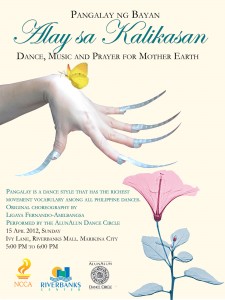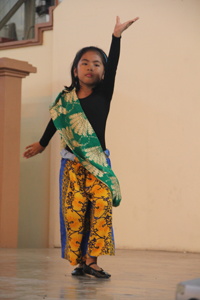
The Breath is the Life Force which is also the foundation of pangalay movements. (The same is true for Asian movements like qi gong, tai chi and aikido.) Being a dance style not predetermined by linear time but by breathing in harmony with nature, pangalay connects the dancer and the audience to the Life Force. Oftentimes, spectators of pangalay say that its slow and meditative movements are likened to a prayer.
Pangalay also promotes gentleness and harmony with inner and outer surroundings. When we learn how to work with the Breath and allow the energy to do its own work freely as we dance, we can affect ourselves and our surroundings.
Meanwhile, the outer world—the modern world with its high-speed technology and unsustainable pattern of production and consumption– is the opposite of the slow and languid movements of pangalay. The modern world produced the inconvenient reality of pollution, ecological imbalance, deforestation, and climate change that is now pushing the Earth to the edge of destruction.
In “Pangalay ng Bayan: Alay sa Kalikasan,” Ligaya Fernando-Amilbangsa choreographs new works with the AlunAlun Dance Circle to promote awareness about climate change and other environmental concerns. The new dances will help raise consciousness about people’s responsibility in caring for the environment.






